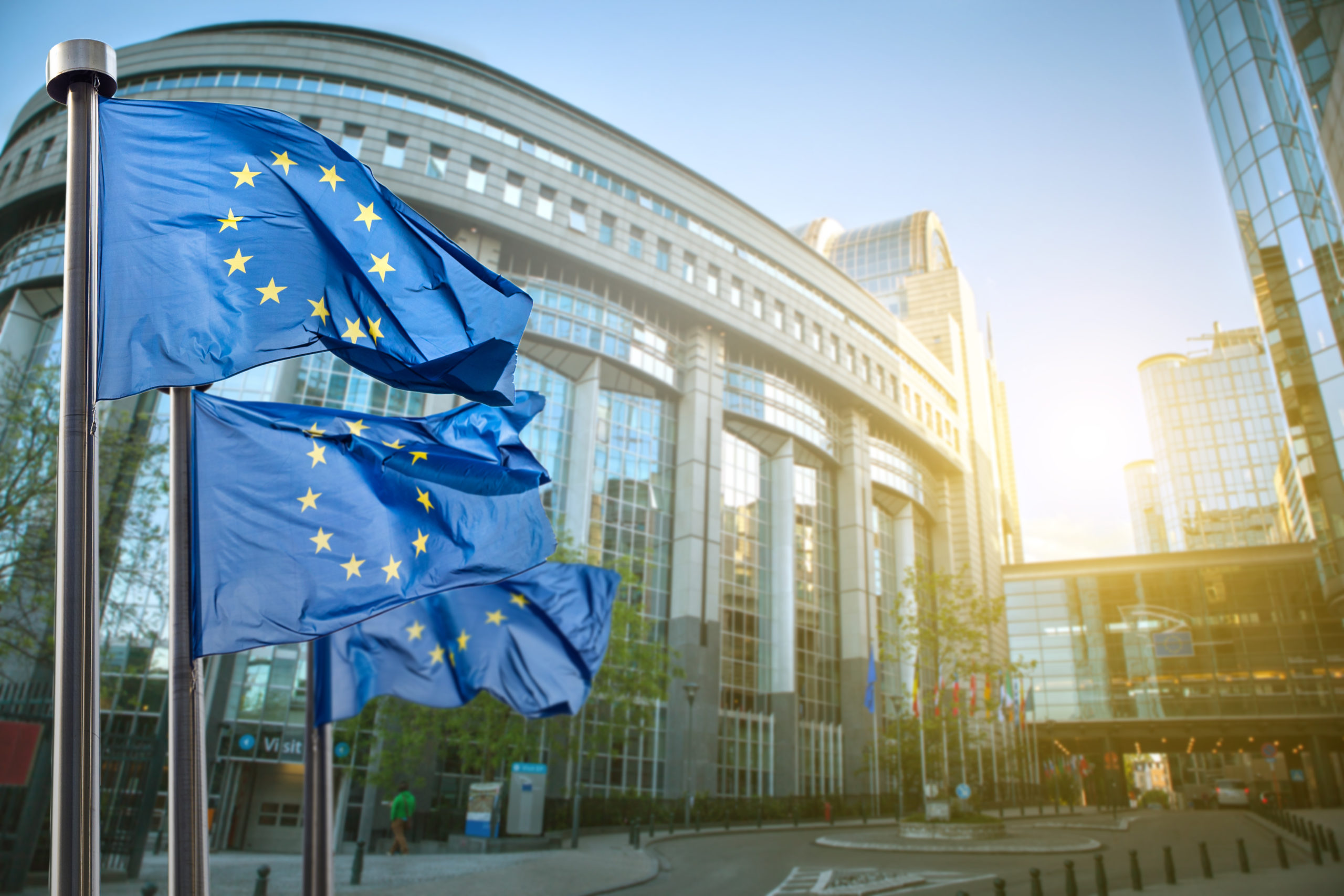Le changement climatique fait peser un risque systémique pour l’économie mondiale et européenne et requiert des investissements massifs. Il représente une menace pour l’atteinte des objectifs européens.
Data on sustainability impacts, risks and opportunities, is at the heart of the European capital markets union project.
Europe is working to establish a capital markets union in order to achieve three main objectives:
- Eliminate the fragmentation of national markets for financial services,
- Make the continent more attractive to investors,
- Promote access to finance for small businesses.
Climate change and other environmental and social risks pose a systemic risk to the global and European economy and requires massive investment. It therefore represents a threat to the achievement of these European objectives.
To meet these economic and financial challenges, the European Commission launched its “Financing Sustainable Growth” action plan in 2018.

One of its first measures was to improve the publication of sustainability impacts risks and opportunities related information by companies. Why? To inform investor decision-making and to redirect financial flows towards greater resilience. In 2014, the Non-Financial Reporting Directive (NFRD) introduced an obligation to publish non-financial information. As a result, around 11,700 companies in the EU, produced a non-financial report (DPEF in France) as of 2018.
Investors have a growing need for ESG information. This data will become more reliable, relevant and comparable thanks to the overhaul of the accounting and legal framework.
The European Union wanted to reduce the scope for interpretation by companies, “at the lowest possible cost”, by defining precise, standardised indicators.
The European commission has revised and corrected its non-financial reporting unification policy.
Investors have a growing need for ESG information. However, this data is not sufficiently reliable, relevant or comparable due to a legal framework that is considered insufficient.
In fact, there is a significant gap between the ESG information published by companies and the needs of the users for whom it is intended. The lack of precision in the reporting requirements particle explains this gap. Given the large number of existing standards and private frameworks, companies are still unaware of exactly what information they need to communicate.
The European Union has decided to reduce the scope for interpretation by companies, “at a lower cost”. The Commission has defined precise, standardised indicators. To this end, the Commission has tasked EFRAG with drawing up standardised ESG standards. This standardisation work is based on the work of various working groups, including the ISSB (International Sustainability Standards Board, part of the IFRS Foundation), and recognised initiatives such as the Global Reporting Initiative (GRI), the CDP*, the CDSB* and the IIRC*.
This detailed revision of the European non-financial reporting framework gave rise to the CSRD (Corporate Sustainability Reporting Directive).
Its aim? To clarify companies’ ESG disclosure obligations. In particular, this effort aims to align them with the information that financial market players need to meet their own reporting obligations.
Cette révision constitue, avec la Taxonomie verte et la Sustainable Finance Disclosure Regulation (SFDR), un des piliers de la stratégie de croissance verte européenne et du Green Deal qui fixe l’atteinte de neutralité carbone de l’Union Européenne à 2050.
EFRAG’s first ESG standards were published in 2023.
The CSRD is part of a 3-pillars legislative package: Corporate Transparency and Audit, Development of Sustainable Finance and Weighting of Green Activities in the European Economy.
One of the pillars of Europe’s green growth strategy and the Green Deal
On 21 April 2021, the European Commission published the first draft of its directive on non-financial reporting. In order to reinforce the European Union’s objectives in terms of sustainable finance, the CSRD subsequently replaced the NFRD at the beginning of 2024. Together with the Green Taxonomy and the Sustainable Finance Disclosure Regulation (SFDR), this revision is one of the pillars of Europe’s green growth strategy and the Green Deal, which sets a target of carbon neutrality for the European Union by 2050. Transparency on the environmental and social consequences of economic activities is a prerequisite for their transformation

Integrating ESG into company management.
The CSRD is a directive aimed at companies. It deepens the integration of ESG criteria into their management. On the one hand, it increases the ESG transparency requirements of the NFRD. And it extends them to all large companies and all listed companies. Secondly, it improves the quality of information about strategy, business model, policies, action plans and environmental, social and governance indicators. It standardises the disclosure requirements for ESG risks and opportunities and their positive or negative, actual or potential impacts on society and the environment.
Since November 2022, the 12 European Sustainability Reporting Standards (ESRS) have provided the framework for this effort to unify European non-financial reporting. The CSRD is the first directive to introduce mandatory sustainability reporting standards for all large companies. The single European sustainability report was born.
While ESRS do not claim to govern the way in which companies manage their risks and impacts, they do provide a strong incentive to adopt best ESG management practices. ESRS establish an explicit link with the reporting obligations of financial institutions on the same ESG themes. The purpose of financial control is clearly there.
The CSRD quadruples the scope of the current NFRD, making it applicable to around 50,000 companies instead of the current 11,700.
The impact on competition and access to finance.
It is likely that your colleagues are subject to these new rules and are seeking to make the most of them.
The new rules apply to 50,000 European companies, instead of the 12,000 previously covered by the NFRD.
The scope of the CSRD quadruples that of the NFRD: the new directive will gradually cover almost 50,000 European companies, compared with 11,700 under the previous rules. The CSRD will also affect around 10,000 foreign companies, mainly American.
Changes in the scope of sustainability reporting obligations
| Company categories | Application criteria Current NFRD | Application criteria New CSRD |
|---|---|---|
| Large unlisted companies |
|
Mandatory if two of the following three criteria are met:
|
| Listed companies |
|
Mandatory application (excluding microenterprises that do not meet 2 of the following criteria:
|
| Unlisted SMEs | Voluntary application of the standard |
The unification of European non-financial reporting improves the measurement of companies’ economic value.
The CSRD directive clarifies the sustainability expectations that companies must meet. These expectations require more analysis of ESG issues, a higher level of verification of the information communicated, a prescriptive list of information to be published and prospective and quantitative data to be provided. The forward-looking dimension of European sustainability reporting makes it possible to analyse financial and non-financial projections.
-
Systematic identification and assessment of ESG impacts, risks and opportunities
Systematic identification and assessment of ESG impacts, risks and opportunities
The cornerstone of the CSRD is the analysis of double materiality. This new prerequisite sets out an unambiguous definition of ESG reporting, and requires companies to provide an overall view. On the one hand, investors have a vision of the impact of sustainability issues on a company’s financial performance. On the other hand, they visualise the impact of a company’s activities on the environment and society. EFRAG expects that the list of ESG impacts and the list of ESG risks and opportunities will largely overlap.
-
Subject to audit
Subject to audit
In addition, the reliability of CSRD statements is enhanced by an independent third party audit. This obligation guarantees a higher level of assurance than the verification of sustainability-related information provided by the former NFRD (limited assurance). In addition, this third-party assurance applies to data whose selection depends on a materiality analysis. It can therefore also be expected that the materiality test will be audited.
The aim is to maximise the overall performance of companies through management that takes better account of the relationship between financial and non-financial factors.
With the CSRD project, exposure to reputational risk (greenwashing, lack of transparency) and loss of social acceptability is multiplied and becomes European or even international.
European companies will provide integrated, human- and machine-readable and comparable sustainability reports.
The CSRD introduces new qualitative and quantitative requirements for integrating ESG into credit analysis.
The unification of European extra-financial reporting aims to expose investors to the growing gap between the book value of many companies and their market value. The publication of information on intangible assets such as intellectual capital, human capital, reputational capital and research and development capital will therefore be required.
The ESRS sustainability standards developed by EFRAG detail the information to be published.
Firstly, companies are required to assess which topics are material to their business.With regard to climate change, a company may conclude that it is not “material”, but such cases will be rare and the compulsory and forward-looking justification of non-materiality amounts to making climate reporting compulsory. Secondly, the ESRS standards specify the elements to be assessed, measured and disclosed, including the relevant indicators and targets.
Two cross-cutting standards, ESRS 1 (general requirements) and ESRS 2 (general information) apply to all sustainability issues. Ten thematic standards address the three ESG pillars.
In terms of content, the unification of European non-financial reporting means that financial and non-financial information must be published in a single management report. The aim? To improve the overall performance of companies by taking into account the relationship between financial and non-financial information.
The company’s management report will have to be published in a single European electronic format (xHTML tagging).
In addition, the company’s management report will have to be published in a single European electronic format (xHTML). Digital tags will be integrated into ESG reporting to make it easier to read, compare and search. The taxonomy required for tagging is being developed
With the application of the CSRD, exposure to reputational risk (greenwashing, lack of transparency) and loss of social acceptability is multiplied and becomes European or even international.
The entry into force of the text should motivate all companies to prepare for the consequences of this transition.
The CSRD came into force on January 1er 2024, with gradual implementation up to 2028. It should be noted that the application of this new directive is part of a very busy European regulatory agenda.
The timetable for implementing the CSRD is as follows:
- 2025 (for fiscal year 2024): Application of the CSRD by large European and non-EU companies already subject to the NFRD
- 2026 (for fiscal year 2025): Application of the CSRD by other large European and non-EU companies
- June 2026 : Adoption of a second set of industry-specific ESRS standards resulting from EFRAG’s work.
- 2027 (for fiscal year 2026): Application of the CSRD by listed SMEs
Possible postponement to 2029 (for fiscal year 2028) - 2029 (for fiscal year 2028) : Application of CSRD by other large non-European companies
All European directives must be transposed into the national law of each member state. In France, the ordinance of December 7, 2023 established the legislative procedures for implementing this ambitious directive.
If smaller companies are to benefit from a transition period of a few years, it’s time to get ready.
Indeed, the creation of a sustainability analysis that meets transparency standards and serves the company’s project is anticipated nine to twelve months before the publication date.
Understanding the regulations in detail is the first step in this colossal task; that’s what Positivéco proposes in its article A 6-point overview of the CSRD.
Would you benefit from a webinar dedicated to preparing for these new rules? Contact us here to register.
Notes :
- EFRAG: European Financial Reporting Advisory Group
- ISSB: International Sustainability Standards Board, part of the IFRS Foundation
- GRI: Global Reporting Initiative
- CDSB: Climate Disclosure Standards Board (CDSB), is a consortium of companies and NGOs, recently consolidated within the IFRS Foundation.
- IIRC: International Integrated Reporting Council.
About Positivéco
At Positivéco, we see new national and international CSR regulations as vectors for positive growth.
Our job: to improve the readability of your activities for better valuation.
Since 2009, we have been supporting financial institutions, public players, and listed and unlisted companies in the evaluation of their CSR policies, the production of their extra-financial reporting and the implementation of their climate investment and aid projects. Development.
Make an appointment today and find out how to meet the new requirements of economic transparency while serving the project of your company.









Contact us now!